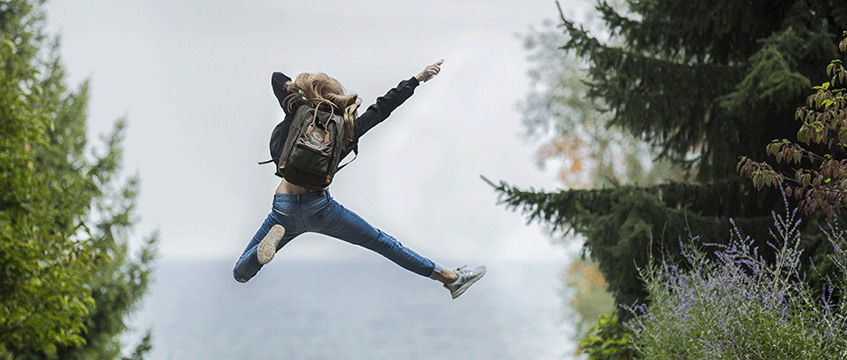When employees at Cairo-headquartered developer Mountain View walk across an internal bridge from the lifts to their office space, facial recognition may trigger a personalised response.
The “live” bridge might occasionally surprise them with a burst of enthusiastic cheering or a blast of their favourite song; it could sing Happy Birthday to them by name or wish them a happy anniversary. How the bridge responds to an individual is driven, via an algorithm, by their own responses to 500 questions when they join the company.
Why go to such lengths? Because having a “routine, static building is anti-happiness,” says Ahmed Moursy, the aptly named chief happiness officer for privately owned Mountain View. And happiness is crucial to business and team success. “We have been collecting data from multiple buildings before and after applying the concept of ‘happiness by design’ and we have found that happiness does affect the bottom line,” he says.
Moursy is at MIPIM this week as part of a team launching the Happiness Ecosystem Index, which they hope will become a global benchmark for measuring happiness in the built and work environment.
The index has been produced by Happiness by Design, a partnership led by Moursy between Mountain View and global architecture firm CallisonRTKL with culture coach Delivering Happiness Global. Mountain View’s own “Happy HQ”, which houses 600 of its employees, has been the pilot project and Moursy says the index has also been used in three other commercial buildings so far – two in Egypt and one in the US.
More than fluffy nonsense
If you’re ready to dismiss this as fluffy nonsense, the index offers so much more than a bridge which remembers your birthday – delightful as that might be for some.
“We used to talk about why there were no buildings that focus on happiness by putting people at the centre of design and how we could measure the impact on people themselves,” says Moursy, who trained as an architect.
“It’s not about a fluffy, fun happiness. It’s the analysis of culture and needs: peoples’ pay needs, their human needs, their family needs,” he says.
The five truths
For Mountain View, implementing the Happiness by Design model in its workplace has coincided with a doubling of its revenue over a period of around two years to EGP19bn (£917m).
Assessment and measurement are based on five so-called “truths”: meaning; vitality; freedom; engagement and delight. These in turn are divided into 20 “essentials”, 40 “merits” and 200 “pursuits” to form the Happiness Ecosystem Index. Bespoke building apps are used to ask building users narrowly defined questions and to gather data to find out what works and what doesn’t and to design solutions.
Getting the physical space right is crucial: “vitality”, for example, covers everything from the importance of designing intuitive wayfinding and navigation strategies to maximise efficiency and accessibility for all tenants through to giving access to a variety of options when commuting to work. Physical environments should create “a sense of comfort, allow employees to be free of constraints and distractions so their energy can be focused on doing meaningful work”. Comfort extends to a clean, orderly environment and air freshness and odour control.
But this must go hand in hand with “meaning”: helping employees to find a higher purpose in their work, career development and recognising employees for their contribution to success. Employers should also show that “the organisation is dedicated to the future of the planet and the realisation of our human footprint”.
“Freedom” includes “creating a physically, emotionally and psychologically safe environment that provides foundational security to employees so they can contribute their skills and talents to the success of the organisation”. “Engagement” focuses on the importance of instilling trust, integrity, empowerment, pride and loyalty within an organisation’s culture and its employees.
And finally, “delight” looks at how a corporate culture can be expressed by symbolic features other than company values and higher purpose. The idea is that “for spaces to remain attractive they have to delight by staying fresh and dynamic as an expression of creativity, playfulness, and surprise”. This is clearly where the bridge fits in.
Moursy says the development of the index has become more relevant than ever. “Most of Europe and the US are struggling with the problem of how to bring people back to the office after Covid. You have to offer them something different,” he says.
Mountain View, founded by chairman Amr Soliman, is now incorporating Happiness by Design into a commercial refurbishment project and into its own residential projects in Egypt. It is also working with a developer in Saudi Arabia and hopes to roll out use of the concept at a city level as well as for individual projects. Moursy also hopes other architects will be keen to learn from the partnership.
“Happiness is not something you can own. You have to share it,” he says.
To send feedback, e-mail julia.cahill@eg.co.uk or tweet @EGJuliaC or @EGPropertyNews











